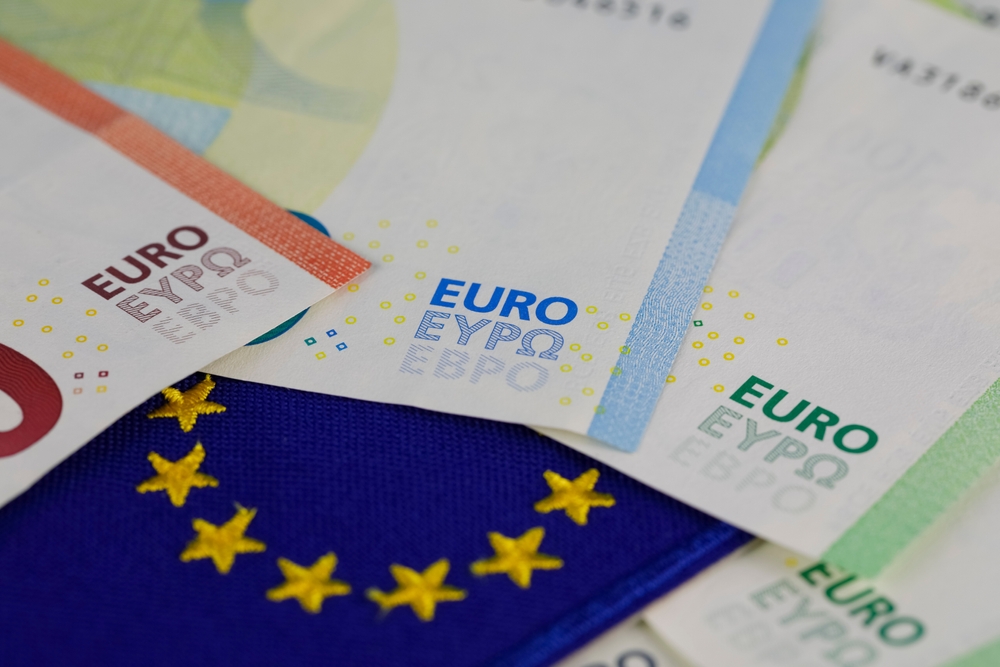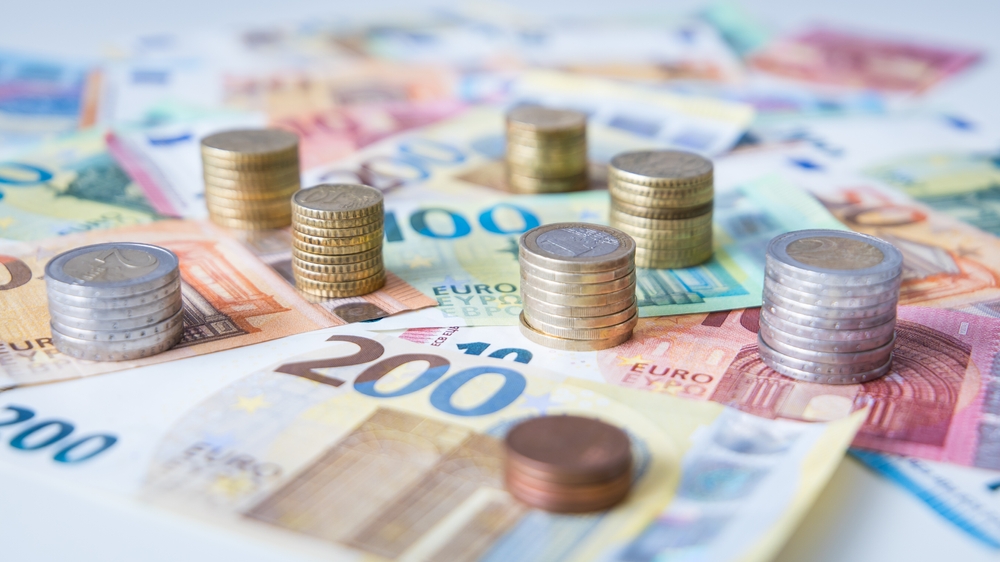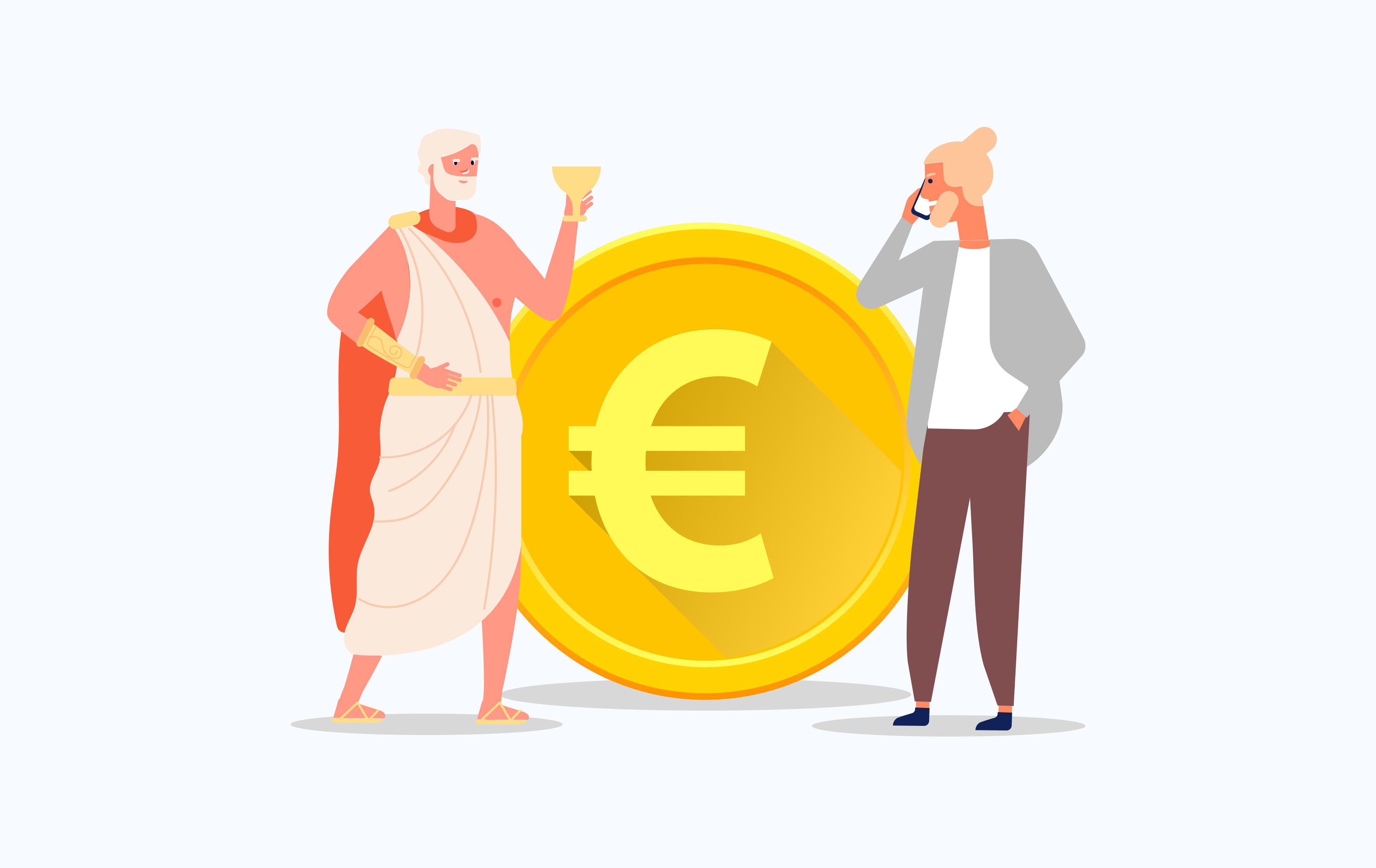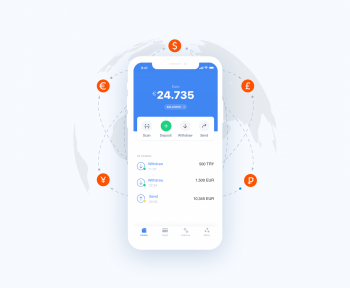The euro currency is more than just a form of money—it is a symbol of European unity, integration, and economic strength. Since its introduction, it has played a pivotal role in shaping global finance and facilitating cross-border transactions.
The European Union (EU) was founded in 1957, just 12 years after the end of the Second World War, and set out to build what it described as a ‘common market.’ However, it became apparent very early on that if the EU was to achieve its economic goals, each of the member countries would need to adopt a common currency.
The euro has been part of the financial landscape since 1 January 1999; it has been in our pockets since 1 January 2002. The creation of the single European currency took decades of preparation.
In this blog, we’ll explore the history of the euro, how it developed into one of the world’s most important currencies, the euro currency symbol, which countries use it, and its role in global markets.
We’ll also take a look at the future of the euro and explain how you can easily manage, buy, and use euros with Jeton Wallet and Jeton Card for all your European and international needs.
The Euro Makes Its Debut
The history of the euro dates back to the post-World War II era when European nations were working to establish long-term peace and economic cooperation. In 1957, the European Union (EU) was founded, and over time, leaders recognized the need for a common currency to support their economic vision.
On January 1, 1999, the euro currency was officially launched, initially as an “invisible currency” used only for accounting and electronic transactions. It wasn’t until January 1, 2002, that euro banknotes and coins entered circulation. This was one of the largest monetary changes in history, involving the replacement of multiple national currencies.
In 1999, 11 countries, including Austria, Belgium, Finland, France, Germany, Ireland, Italy, Luxembourg, the Netherlands, Portugal, and Spain, adopted the euro by fixing their exchange rates and transferring monetary policy to the European Central Bank.
In the beginning, the euro was an ‘invisible currency’ and was only used for accounting purposes. Three years later, in 2002, euro coins and notes came into circulation, and national currencies were gradually withdrawn.
Over the years 8 more countries joined the club (Cyprus, Estonia, Greece, Latvia, Lithuania, Malta, Slovakia, and Slovenia). The first 10 years of the euro were marked by the currency’s establishment and enlargement.
Initially, the euro was only used for electronic payments and financial markets. By 2002, however, euro banknotes and coins replaced national currencies, making the euro a part of everyday life across Europe. Over the following years, more countries adopted the euro, expanding its reach and influence.
Euro Banknote and Coin Designs
The designs for the new euro banknotes and coins had been agreed upon in the mid- to late nineties, with production starting at the mints and printers some three and a half years before the physical currency was due to be launched.
The goal was to create a unified design that symbolized Europe’s shared identity while avoiding references to specific countries or famous figures.
On January 1, 2002, 7.4 billion banknotes and 38.2 billion coins were introduced. Each euro coin features one common European side and one national side, reflecting both unity and individuality.
Benefits in the History of the Euro
The euro was implemented with the goal of creating a more stable European economy. Looking at the history of the euro, we can see that the euro improved economic growth across Europe and offered more integration among financial markets.
The euro history also shows that the euro currency strengthened European presence in the global economy through being a reserve currency. The history of the euro also proves that the euro helped ease exchange rate volatility among different European nations.
The implementation of the euro had several major advantages:
-
Economic stability: It reduced currency fluctuations between eurozone countries.
-
Growth in trade: Businesses benefited from a single currency across borders.
-
Global influence: The euro became a significant reserve currency, strengthening Europe’s position in the world economy.
-
Financial integration: It united European markets, making cross-border investments easier.
The history of the euro shows that it was more than just a monetary change—it reshaped Europe’s role in global trade and finance.

What Is the Euro Currency Symbol?
The euro currency symbol (€) was inspired by the Greek letter epsilon (Є), representing Europe, and crossed by two parallel lines to signify stability. The ISO code for the euro is EUR, which is widely used in international finance and trade. The euro symbol is now recognized globally, much like the dollar ($) or pound (£), making it one of the most powerful signs in international currency markets.
Is the Euro a Reserve Currency?
Yes, the euro is a reserve currency, second only to the US dollar. Central banks and governments around the world hold euros as part of their foreign exchange reserves. This status reflects the euro’s global trust and stability, making it an attractive option for international trade, investment, and savings.
What Is the Euro Currency Market?
The euro currency market refers to the global network of banks, businesses, and individuals trading euros for other currencies. It is one of the most liquid and active markets in the world, with daily transactions worth billions. This market allows companies, travelers, and investors to exchange euros easily, ensuring its dominance in international finance.
Which Country Has the Euro Currency?
Currently, 20 European Union countries use the euro currency as their official money. Some of the main euro currency countries include Germany, France, Italy, Spain, and the Netherlands. The euro is also used outside the EU, such as in Monaco, San Marino, and Vatican City, due to formal agreements.
The euro is used by over 340 million people daily across Europe. It is the second most-used currency in the world, not only within Europe but also in international transactions. Tourists, businesses, and governments all rely on the euro as a stable and widely accepted currency.

Which Country Does Not Use the Euro as Its Currency?
Although the euro is the official currency in many EU countries, some members have opted out. For example:
- Denmark and Sweden still use their own national currencies.
- Poland, Hungary, and Czechia continue with local money but may adopt the euro in the future.
This shows that while the euro is widespread, not all EU countries are currently euro currency countries.
Future of the Euro
The future of the euro looks strong, but challenges remain. Experts predict that the euro will continue to grow in importance as Europe strengthens its economy and increases digitalization in payments.
There is also a move toward a digital euro, which would modernize transactions and compete with cryptocurrencies. If successful, this could make the euro even more powerful in global markets.
How to Buy Euro Currency?
If you’re traveling or doing business in Europe, you may wonder how to buy euro currency. Options include:
- Currency exchange offices at airports or cities
- Banks offering foreign currency services
- Digital wallets like Jeton Wallet, which allow you to instantly exchange and store euros online
Using a digital wallet is often the most convenient and secure method, especially for frequent travelers or international workers.
Send Money Across Europe with Jeton!
Sending money in euros has never been easier with Jeton Wallet. Whether you’re transferring funds to family, paying for services, or shopping online, Jeton provides a fast, secure, and low-cost solution.
With Jeton, you can send euros instantly across Europe without worrying about hidden fees or exchange rate issues.
Use a Jeton Card for Your European Trips!
Traveling across Europe? The Jeton Card is the perfect companion. Load euros into your Jeton Wallet, connect it to your Jeton Card, and spend with ease across thousands of shops, restaurants, and online platforms. It’s safer than carrying cash and more flexible than traditional banking cards.
You can also check out our other blogs to stay informed about our services:
Wrapping Up
The history of the euro demonstrates how one currency unified a continent, boosted economies, and became a global financial powerhouse. Today, the euro continues to play a critical role in trade, travel, and investment worldwide.
With tools like Jeton Wallet and Jeton Card, managing euros has never been easier. Whether you want to buy euro currency, send money across Europe, or pay during your travels, Jeton has you covered.
Download the Jeton app today from Google Play or the App Store, open your free account, and experience the easiest way to manage your euros anywhere in the world!



